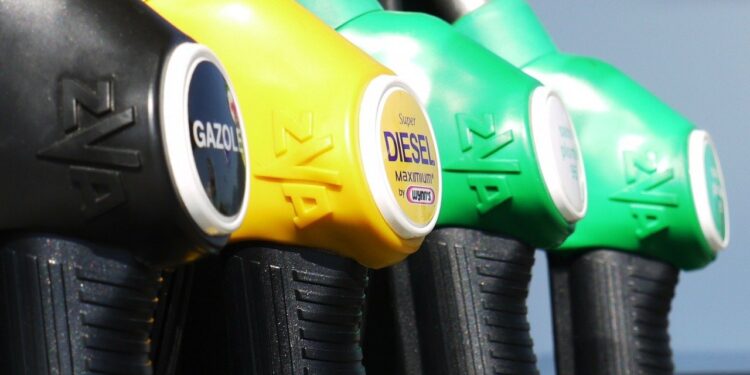Questions to Ask When Shopping for a Fuel Card

There will always be opportunities to make some savings but before you take advantage of any, proper vetting is required. This includes ensuring that the latest fuel card will truly impact your bottom line.
The most important thing on the mind of fleet managers and business owners is to get a card that enables them to pay less per gallon. But given all the fuel cards on the market today, you may need to understand the discount structure well to know which fuel card will give you the most savings. In this article, we cover the most important questions to ask when comparing different fuel cards.
Are Discounts Off the Credit Price or Cash?
Far from what most people think, savings of credit cards are not that good, more so when you compare it to discounts you get off the cash price. The reason is that fuel stations are trying to compensate for the processing fees levied on them by credit card providers.
When you get a discount on the cash value, you are saving additional money above the cheapest price listed. On the other hand, the discount you get off the credit price could still be a more expensive cash price. Such details might be concealed in the terms and conditions of a credit card, which is why you want to be sure to ask.
Is the Card Cost-Plus or Retail-Minus?
Under retail-minus pricing, you pay the advertised prices and get a rebate via your fuel card program. That price is made up of the actual fuel cost, taxes, and the retailer’s margin. The minus refers to the rebate you negotiated with your fuel card provider and it will be paid to you later.
On the other hand, cost-plus pricing is where you pay a fixed price. Instead, the driver is charged a rack price determined by the OPIS nationwide index, plus federal and state taxes. The addition of extra fees is what is called the “plus”.
As to the pricing model that saves you more money, it will depend on where you fuel up and the retail margins. Cost-plus is likely to save you money in places where it is expensive to transport fuel to retailers. However, in places where fuel transportation is cheaper and profits margins smaller, the better option is to stick with a retail-minus pricing mechanism.
There are fuel cards that calculate for you the option that’s better between the two. Anytime you purchase fuel, the card works out the pricing model that gives you the highest savings. This way, you are guaranteed of getting the best discount available on every single transaction. Also, drivers and fleets don’t need to worry about switching between cost-plus and retail-minus pricing.
Does the card charge any fees?
Some fuel card providers charge a small transaction fee every time a card is used to buy fuel. Also, some cards may have a set-up fee charged once, in/out of network fees, and monthly charges. To get the true value of fuel discounts, make sure you ask about these charges. Although most of these fees are small and are unlikely to impact your savings, it is still a good thing to know what is in store for you.
Are Discounts Given as a Rebate or at the Pump?
Fuel cards have two main ways of issuing discounts to customers. The first one is where a card provides discounts at the point of sale. This means that the reduction of the fuel price is done right at the settlement point or at the pump. The other method is where discounts are offered in terms of a rebate. This means that the driver is billed the full cost at the pump and later on, the business gets a check for the total amount of discounts offered for the fuel purchases. This model can confuse drivers into thinking they are not getting any discounts because the receipt contains the full price of the fuel.
What Does the Network Look Like?
When comparing the different fuel cards, some of the things you need to pay attention to is the location and size of the fuel network that the program covers.
- Where are the discounts most likely to be got? Do you go to large, nationwide companies or local, mom-and-pop shops? Do they have multiple network options?
- Are these stations along your route? Is it worth going out of your route to get these discounts?
- Does the card cover the routes you currently operate in and also the ones you are thinking of plying?
What are the additional benefits of the fuel card program?
Before you settle for one fuel card, you need to see if it offers additional benefits. These include fee waivers, contract flexibility, scaled savings (the more gallons you purchase, the greater the discount you will get), and discounts on other products or services. In some fuel cards, a station’s rewards are complimented with additional points for specific purchases. Other fuel cards offer additional savings on lodging, office supplies, and document scanning, to mention but a few. Ultimately, you want to be sure that the card you settle on gives you the most benefits.
Conclusion
A simple search on Google produces multiple fuel card options. Beware of the ones that make nice claims but fall short of their promises. So how do you know that you have got the best card? One way to be sure is to pose the right questions. This helps you to get answers and also the best card for your specific business.
The number one motivation for switching to fuel cards is to buy fuel at discounted prices and save money for your business. Fuel cards also make paying for petrol convenient and avail a rich trove of data at your fingertips. But don’t ignore additional benefits that you may get from using a fuel card. Make sure the card provider is situated along the route otherwise all the discounts you get may get eaten up by the distance you need to drive to reach the fuel station.









